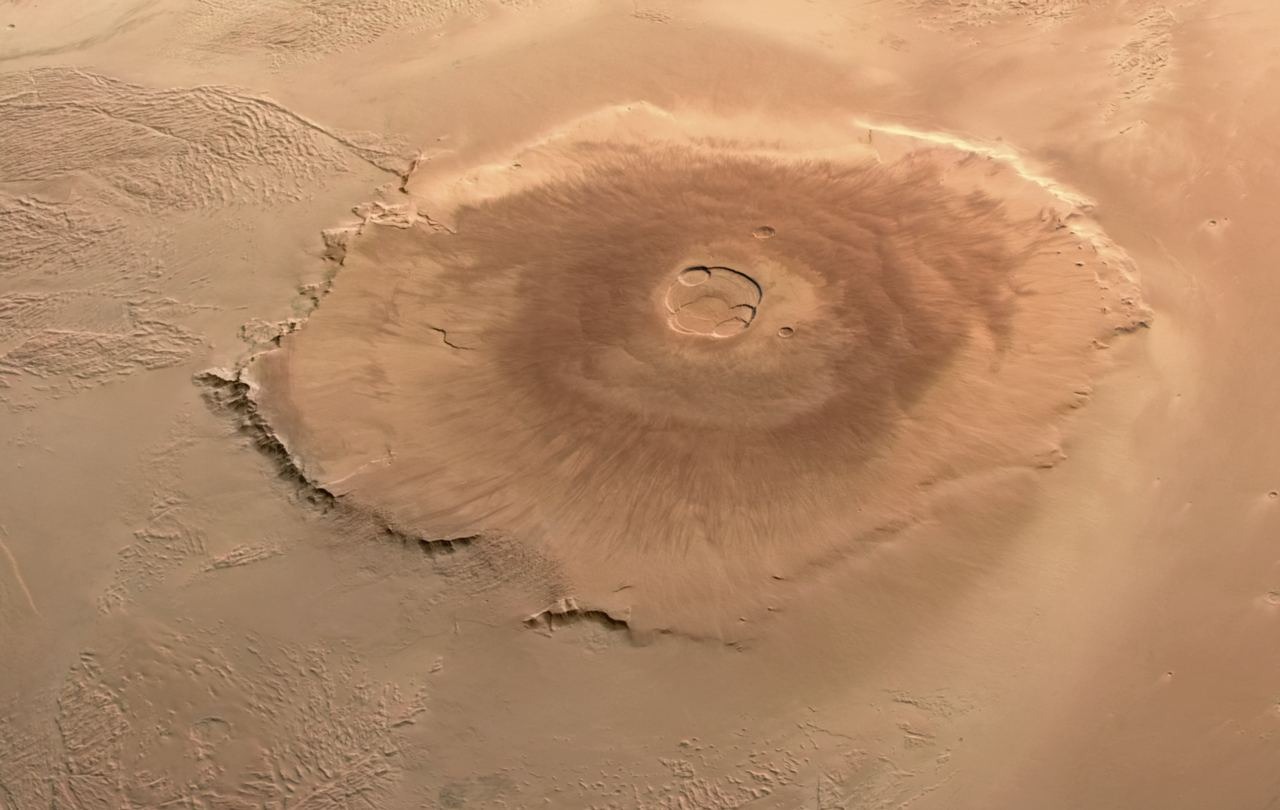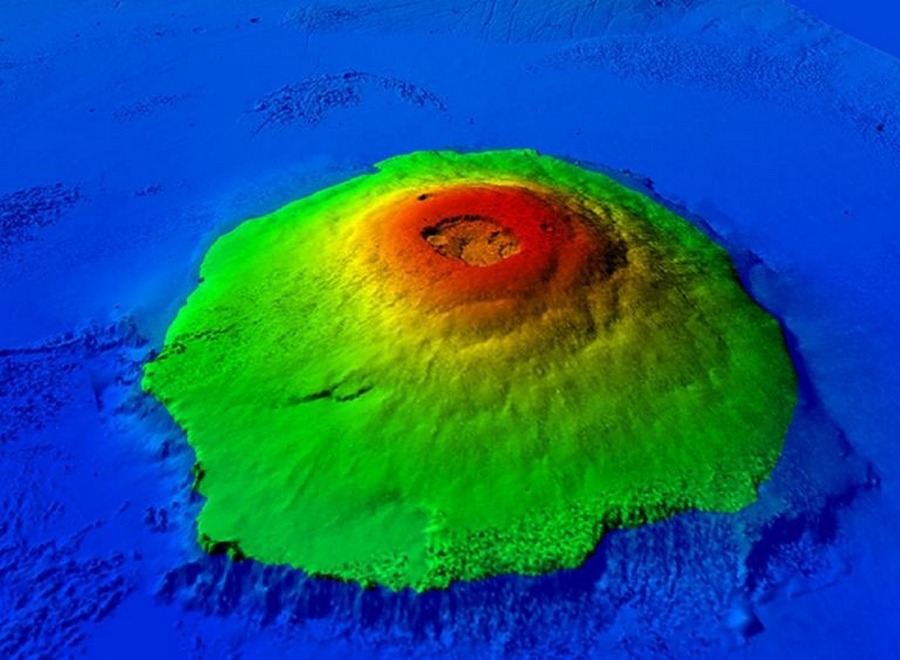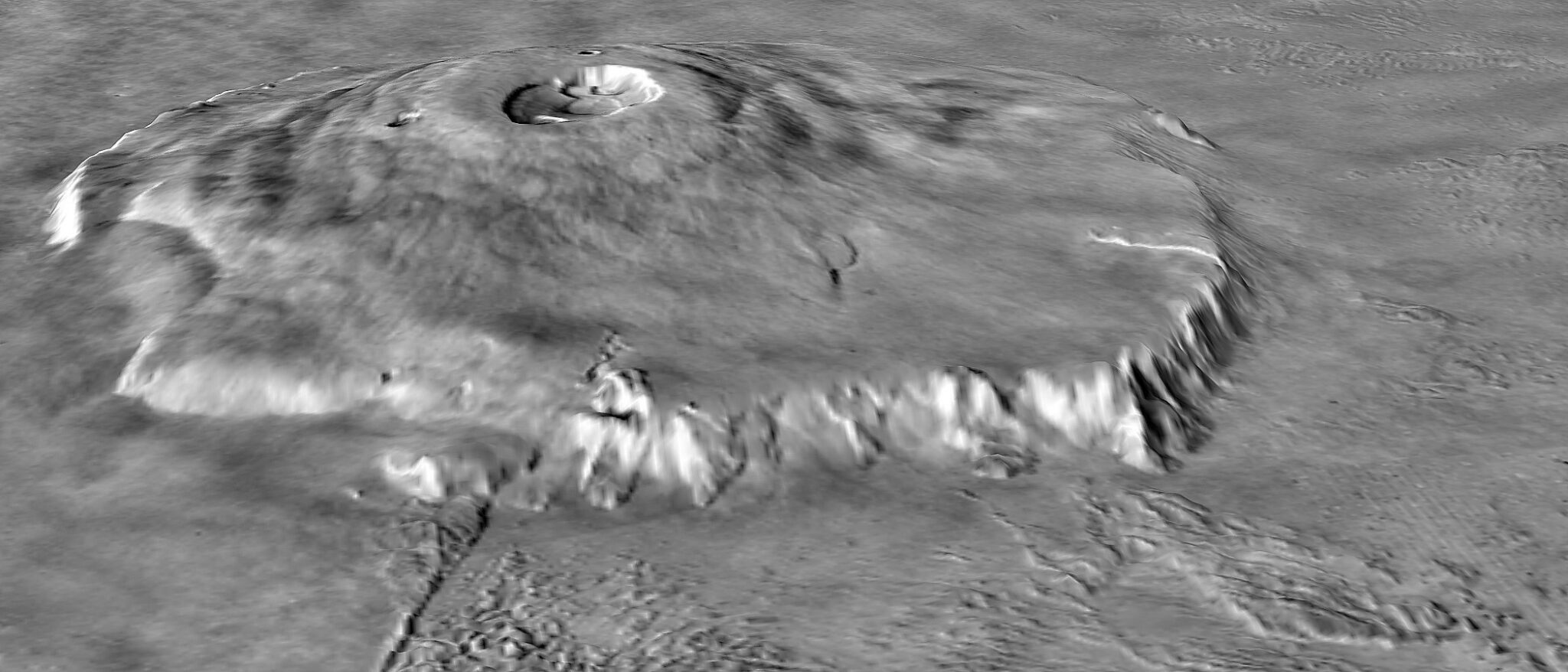Mount Olympus, located on the northwestern edge of the Tharsis Montes region on Mars, attracts the attention of astronomers with its huge size. According to the data obtained by the Mars Orbiter Laser Altimeter (MOLA), an instrument on board NASA’s Mars Global Surveyor (MGS), this mountain is the highest in the Solar System – 21.9 km high, which is about 2.5 times the height of Mount Everest with its height of 8.85 km. According to modern estimates, this extinct shield volcano formed during the Hesperian period of Mars, about 3.7-3 billion years ago.

Its existence coincided with the period when Mars had a denser atmosphere, a warmer climate and had liquid water on the surface. At that time, the planet was covered by a global ocean that covered most of the northern hemisphere, known today as the Vastitas Borealis. According to a recent study conducted by researchers from the National Centre for Scientific Research (CNRS), features found on the slopes of Olympus indicated that it could have been a massive volcanic island where volcanic eruptions flowed into the ocean, similar to the Earth’s.
The study was conducted by a group of CNRS researchers from the Paris-Saclay Geosciences Laboratory (GEOPS) at the University of Paris-Saclay. The results are published in the journal Earth and Planetary Science Letters.
Martian Ocean
Knowing when, where and for how long running water has existed on Mars is crucial for astrobiological studies of the Red Planet. Now scientists believe that once the Martian atmosphere was thicker and could absorb more heat. But after the sudden disappearance of the planet’s magnetic field about 4.2-3.7 billion years ago, the planet began to collapse under the influence of the solar wind. In fact, knowing how long the warm water environment has been preserved on Mars, astrobiologists hope to determine whether at least some primitive life could have been born during this time.

For their research, the team analyzed the features of the slopes of Olympus and the elevated coastlines of the volcanic region of Montes. Then they compared them with similar features found on volcanoes here on Earth, which were formed as a result of the interaction of magma and water. According to CNRS GEOPS researcher Anthony Hildenbrand, they include “morphological similarities with active volcanic islands on Earth that exhibit significant structural slope fracture at shore level due to a sharp increase in lava viscosity during cooling in the presence of liquid water”.
For decades, astronomers and astrogeologists have considered the Montes Mountains region an anomaly. Although this feature has vaguely defined boundaries, its diameter is about 5,000 km and its height is up to 7 km. The most common view is that this region is at the top of a volcanic “hot point” created by one or more columns of hot magma rising through the mantle – similar to the islands of Hawaii and other hot points in the Pacific Ocean. Since Mars has no tectonic plates, this led to the accumulation of magma over time, which caused a powerful volcanic eruption.
Search for signs of life
Hildenbrand and his team suggested that the ocean that occupied the Vastitas Borealis of Mars existed for a long period of time. At some point during the Hesperian period (3.7-3.0 billion years ago), there was a significant uplift of the surface caused by internal dynamics. This is what led to the fact that the modern coastline around Olympus is polished abnormally high – 6 km above the surrounding lowland. Finally, scientists came to the conclusion that after the retreat of the oceans in the Amazonian period (3 billion years ago) these short lines were partially covered by subaerial eruptions.

These findings may lead to stricter restrictions on how long surface water has existed on Mars, as well as provide additional clues as to how long geological activity has continued on the planet. Although scientists suspected that Mars was geologically dead, recent data provided by the NASA InSight lander showed that there was still some activity in its depths. Since volcanism and geological activity have played an active role in the evolution of life on Earth, knowing how long such activity continues on Mars may also be key to finding evidence of past life.
Earlier we talked about volcanism on Earth and beyond.
Follow us on Twitter to get the most interesting space news in time
https://twitter.com/ust_magazine

